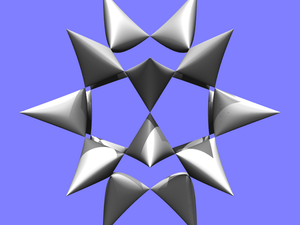


In algebraic geometry, a Barth surface is one of the complex nodal surfaces in 3 dimensions with large numbers of double points found by Wolf Barth (1996). Two examples are the Barth sextic of degree 6 with 65 double points, and the Barth decic of degree 10 with 345 double points.
For degree 6 surfaces in P3, David Jaffe and Daniel Ruberman (1997) showed that 65 is the maximum number of double points possible. The Barth sextic is a counterexample to an incorrect claim by Francesco Severi in 1946 that 52 is the maximum number of double points possible.